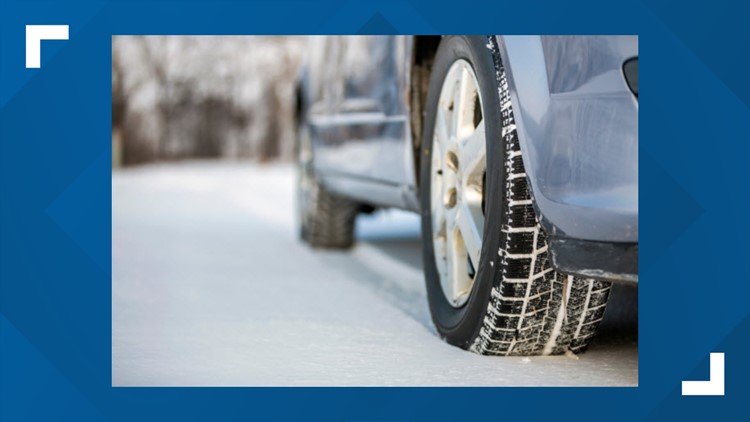What some consider the most wonderful time of the year is also the most dangerous to be out on the roads, especially for drivers in Ohio and Michigan.
According to research pulled from the National Highway Traffic Safety Administration by MoneyGeek, Michigan is the most dangerous state for winter driving with an average of 49 deaths on the road every winter.
Ohio isn't far behind in fourth place with 26 deaths per winter, according to date collected from 2015 to 2017 when road conditions included sleet, snow, blowing snow or freezing drizzle.
Michigan and Ohio are known for their harsh winters, so it's no surprise they've landed in the top ten:
- Michigan - 49
- Pennsylvania - 30
- New York - 29
- Ohio - 26
- Colorado - 17
- Indiana - 17
- Minnesota - 17
- Wisconsin - 17
- Illinois - 15
- Texas - 12
Nationwide, more than 1,300 people are killed and another 100,000 are injured in crashes on snowy or icy roads every year.
As always, the safest thing to do when bad weather hits is to just stay home if you can.
"If you If you really don't have to go out, don't," said Ellen Edmonds with AAA. "Even if you can drive well in bad weather, it's better to avoid taking unnecessary risks by venturing out."
But if you have to drive, here are some ways to stay safe:
Know your vehicle and how it responds to the snow. Most vehicle have anti-lock breaks, which means you need to apply firm, continuous pressure when breaking. Do not pump the breaks.
Slow down. On slick roads, it is harder to stop your vehicle, so decrease your speed and increase your following distance. Experts advise drivers to allow five to six seconds of following distance between your vehicle and any vehicle in front of you to give yourself time to stop safely if another driver breaks suddenly.
Apply the gas slowly. Like stopping, accelerating is more challenging in icy conditions. Apply the gas slowly to gain traction as you get started, and once you're going, don't stop if you can avoid it.
If you do start to skid, don't panic. Follow these three rules:
- Don't hit the brakes. Braking makes the slide worse; ease your foot off the gas instead.
- Turn into the slide. Turn your wheels in the direction the back of the vehicle is sliding.
- Don't overcorrect. Overcorrecting causes the car to keep spinning and is more likely to cause an accident.
Get your car ready for bad weather using these tips:
Get a checkup - The worst time for your car to break down is in freezing temperatures, so get your car serviced to check for leaks, worn hoses, or other maintenance items. Your brakes, defroster, heater, and lights should all be working correctly.
Keep your battery charged - Battery power drops with the temperature. You want to make sure your battery has enough voltage, amperage, and reserve capacity to start on those cold mornings. If it's more than three years old, consider replacing it.
Stock up - Snowstorms can drain your windshield wiper fluid quickly. Top off your washer reservoir before the first snow hits and then keep refilling it throughout the season. This is also an excellent time to check if those wipers need a replacement.
Look down - Have you checked your floor mats in a while? Are they still in the right place and clean of debris? If not, it's time to clean up and re-secure. Improperly installed floor mats can get in your way and prevent you from hitting the gas or brake properly.
Fill up - If you're always pushing it to the last mile before filling up your gas tank, winter is the time to change habits. First of all, you don't want to be stranded in the cold. Second, you won't get as far on that last gallon of gas. According to the Department of Energy, in short-trip city driving, a conventional gasoline car's gas mileage is about 12 percent lower at 20°F than it would be at 77°F.
Tread ready - You should check your tire tread regularly, but in slick conditions, it's critical. The minimum tread for any road conditions is 2/32nd of an inch. In winter driving, the more tread, the better. Tire pressure also changes with colder temperatures, so check your owner's manual to find the right pressure and add air if needed.
Make sure you know what tires you have and determine if you need to buy new ones for the winter months.
It's also important to make sure to have these emergency supplies in your car:
- Spare tire
- Chains
- Snow shovel
- Ice scraper
- Jumper cables
- Sand or kitty litter
- Flashlight
- Blanket
- Water
- Food/snacks
- Cell phone charger
- Medications



